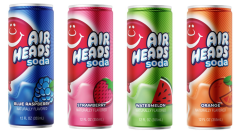Study Finds That US Schools Have The Most Nutritious Food Amongst Places We Buy From

We get our food from a whole lot of different places, whether it be grocery stores, ordering from restaurants, or at work.
Turns out that where we get our food from has some correlation to the nutritional quality of those meals, and the ones with the highest quality actually come from schools.
A recently published study from Tufts University that looked at nutrition data patterns found that from 2003-2018, school meal quality rose to the point that they were our most nutritious food source (2018 is the most recent year that national data for this is available).
Just under a fourth (24%) of the meals consumed at schools were of poor nutritional quality by 2018. In order from lowest to highest percentage of badly balanced meals, the next best food sources were grocery stores (45%), entertainment venues/food trucks (52%), and restaurants (80%).
It should be noted that the above numbers were in terms of meals served to kids. For adults, meals consumed at schools were not evaluated, but the most nutritious food source was grocery stores (33%), followed by food trucks/entertainment (45%), work sites (51%), and restaurants (65%).
A press release from Tufts University attributed the high quality of school meals to the Healthy Hunger-Free Kids Act of 2010, which created new standards for school and early child care nutrition. The policy contributed to a 33% drop in proportion of poor quality meals served at schools over the last 13 years.
The Healthy Hunger-Free Kids Act also resulted in highly equitable changes across the board, with the nutritional improvements coming from school meals being on par across ethnicity, education, and household income.
The biggest health challenge today is unequal access to nutrition. 2 billion people aren’t getting enough nutrients to reach their full potential to fight disease.The problem is “hidden hunger” a chronic lack of vitamins, minerals and micronutrients only whole foods can deliver pic.twitter.com/eL2TaQKnHi
— Thrive (@Thrive4Good) February 19, 2020
In contrast, other food sources had “significant disparities” when it came to improvements in quality across these different demographics.
While it’s great that we know where the most nutritious food can come from, it should be noted that just nine percent of all calories consumed by children in that time period came from schools. With the COVID-19 pandemic raging on, it’s likely that number has even been lower in more recent years.
The study overall found that across the United States, all major food sources could improve on the nutritional quality of their meals, and special attention needs to be given to the equity of how the food is bettered.






















